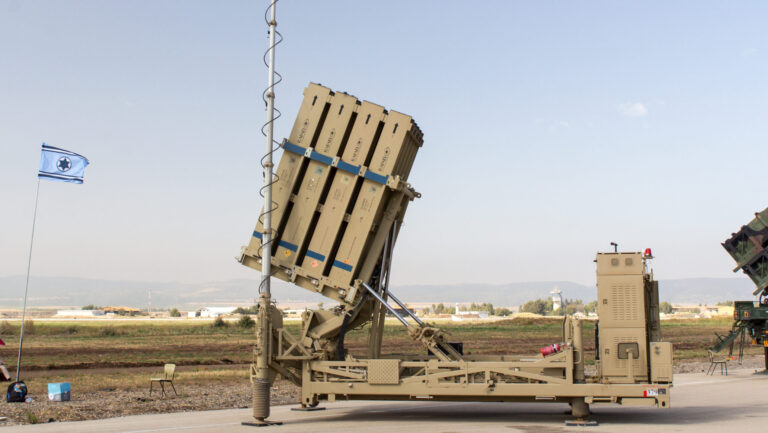Experts emphasize logistics and strategic issues when the Iron Dome System adapts to mainland the United States.
The United States has been prioritizing large -scale threats, such as intercontinental ballistic missiles, with nuclear warheads for many years. However, there are lack of robust systems, such as rockets, artillery, mortar, unmanned aircraft, and cruising missiles, to oppose small -scale threats designed to deal with the Israelic iron dome. As President Donald Trump has begun his second term, reports of unidentified drone sightings in important locations in the United States have raised concerns about national security.
In response, President Trump proposed the development of a US missile defense system, inspired by Israel’s Iron Dome. The purpose of this system is to protect from a wide range of threats such as drones, ultrasonic weapons, and long -range missiles. However, ballistic and geopolitics experts have warned that such systems may not be in line with US defense needs and strategic reality.
Rafael’s international media manager, Daniel Zemach, emphasized the extensive interest in Iron Dome. He told the media line: “As I understand, he talks about an American air defense system like Iron Dome. Looking around, many countries, from Turkey to South Korea, models many countries. I am.
Iron Dome, developed by Israel to prevent short -range threats, has been recognized globally in protecting private regions. However, the success was very different from the United States facing the United States.
Where is the Iron Dome System going? Is it around all confidential sites in the United States? Will it warn the spy about those places?
Dr. Stephen Turner, the representative of Turner Consulting, based in New York, criticized the idea of expanding the Iron Dome System nationwide. “Where is the Iron Dome System going? Is it around all the highly confidential sites in the United States? Will it warn the spy? And the Iron Dome is. I don’t think the drone is the target? “
Unlike Israel, which has a geographically compact and high -population city center, the United States needs to cover the vast network of cities, military facilities, and important infrastructure. Deploying the number of iron dome batteries required to secure such a vast area cannot be realized economically and logistically.
Dr. Jehoshua Calisky, a senior researcher at Tel Avib’s National Security Institute, has questioned the feasibility of deploying systems such as Iron Dome throughout the United States. “The American Iron Dome may be deployed to protect battlefield and strategic bases, rather than a more well -protected city designed to counter the threat of intercontinental ballistic missiles. Is high, “Charisky told the media line.
Charisky suggested that Iron Dome could function as a starting point, but the United States would need to significantly adapt it. “The United States has advanced abilities such as AN/TPY-2 radar with much excellent range and output. If you upgrade the iron dome with a higher-speed radar system and a higher-speed missile, more advanced. He would be able to link with a David Sing -like system designed to intercept the threat. “
In 2019, the United States purchased two iron dome cells from Israel and became the first export for the system to allies. These batteries were designed to protect U.S. military bases and assets in a conflict area where rockets, cannons, and unmanned aircraft is a serious threat overseas. The U.S. Army tests the Iron Dome as a temporary solution to short -range missile defense, and has evaluated the integration of existing systems such as Patriot and Thaad, which aims for medium and long -distance threats.
The acquisition faces the task of integrating Iron Dome into a widespread missile defense framework in the United States. Furthermore, the emphasis is on local and short -range threats, which restricts the effectiveness of cope with the extensive dangers facing the United States.
The Iron Dome is one of the most successful and recognized missile defense systems in the world, and is superior in a niche area of short-range air defense (C-RAM) for rockets, cannons, and mortar (C-RAM). Some countries, including Azerbaijan, Singapore, and Romania, have purchased this system, and countries such as Poland, Greece, South Korea, and India have shown their interests because they have proven effects against modern threats. Masu.
The United States has already operated systems such as Patriot, THAD, and Aegis, which deal with threats of medium -long range, including ballistic missiles and cruise missiles.
It may be technically possible to adapt the Iron Dome to the United States Defense, but experts argue that it may not be realistic. Dr. Jehoshua Calisky explains that it requires significant changes to integrate the Iron Dome System into a US multi -layered missile defense architecture. “The United States has already operated systems such as Patriot, THAAD, and Aegis, which deals with threats of ballistic missiles and cruise missiles. To add short -range solutions like IRON DOME. Charisky requires a large -scale change to ensure sex and avoid redundancy.
Unlike Israel, which is concentrated in a small number of cities, the United States needs to protect vast city networks, military bases, and important infrastructure that spans thousands of miles. Deploying an iron dome battery required for such a communication range is unrealistic, economically and logistically.
Don’t say that it is a drone sent from China unless there is evidence. Let the people see what is in the sky. But don’t make up when you come from that country without evidence.
Dr. Turner has called for a more cautious approach to reports that unknown drones are flying over the US city. “Experts interpret what is going on to fit their stories,” said Turner. “For example, in a drone, please show photos and videos in the sky. Don’t say that it’s a drone sent from China unless there is evidence. When this story comes out first. Currently reported that they were Iran’s drone. Let’s see what’s in the sky, but don’t make it from the country without evidence.


